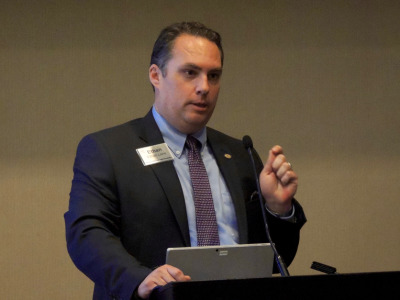Look for Congress to finish shoving a broad, multi-year public lands, parks and water management bill — sort of like what the farm bill is for agriculture — out the door and to the White House this month.
The Natural Resources Management Act had broad bipartisan support last fall but stalled in the end-of-year legislative logjam. So the Senate resurrected it and passed it overwhelmingly, 92-8, this week, and the House likely will also approve it after the chamber’s upcoming week-long Presidents' Day break.
On the Senate floor Monday, Sen. Mike Lee, R-Utah, voiced many western lawmakers’ objections to the Antiquities Act, which allows the president to set aside expanses of federal land permanently as historical monuments, and called for an amendment to limit such designations in Utah. It was rejected on a 60-33 vote.
Sen. Lisa Murkowski, R-Alaska, chair of the Senate Committee on Energy and Natural Resources, said she sympathized with Lee’s intent, but declared her panel wanted to “clear the deck and then move on to some new issues” on public lands and water in the year ahead.
The bill is a batch of over 100 pieces of legislation, written as a crowd-pleaser. The League of Conservation Voters, which favors most of the provisions, extolled the bill as including “more than 100 local and regional land protection bills, including legislation to designate wilderness and . . . would result in over 2 million acres of new protected lands and rivers and boost our nation’s outdoor recreation economy.”

Sen. Lisa Murkowski, R-Alaska
It also includes, for example, the Every Kid Outdoors Act, which will try to foster bonds between America’s youth and their public lands by granting a year of free entry for fourth graders (along with their family members and vehicle) to all legally accessible public lands and waters.
A major feature is permanent authorization of the Land and Water Conservation Fund, which was created by Congress 54 years ago. The fund receives revenue from federal offshore oil and gas royalties and other sources and uses it to acquire and improve lands for public use and preservation. Congress’ periodic reauthorization for the fund expired last fall.
“There’s some good stuff in this bill ... legislation that helps with wildlands fires, resolutions to boundary disputes,” and more, says Ethan Lane, executive director of the Public Lands Council.
However, the PLC and its affiliate ranching groups, the National Cattlemen’s Beef Association and the American Sheep Industry Association, support the overall bill but object to the high proportion of LWCF allocations used to purchase land. The bill sets a minimum share of 40 percent to be directed to local and state grants to buy and improve public recreational sites and facilities, compared with about 25 percent through the history of the trust fund.
Still, Lane says that over 60 percent “of the $18 billion that been spent since the inception ... has gone to federal land acquisitions,” and that’s “out of balance from what was originally intended.”
"There's quite a bit of wilderness throughout the West that is expanded by this bill . . . (and) some national heritage areas created," Lane says. , and they "will impact some ranchers long-term access to graze livestock in the West." He points to the bill's designation of the Mountains to Sound Greenway as a new national heritage area: "Our Washington cattlemen have been very concerned about that," he said.
"Any time you start creating new barriers to grazing . . . (and) creating wilderness areas . . . giving lands special designations, it has a major impact on how ranchers operate," Lane declared.

Ethan Lane, Public Lands Council
What’s worse, Lane added, even though Congress must approve the annual LWCF expenditures, the bill’s permanent LWCF authorization “effectively leaves the majority of the funds devoted to federal acquisitions” in perpetuity. A letter from PLC says that makes the bill “a blank check to the federal agencies for the purposes of land acquisition.”
Some of the provisions designate new wilderness areas in New Mexico, Utah and California. The bill also protects 30,000 acres adjacent to the Yellowstone River in Montana from mining and conserves 100,000 acres of the Umpqua watershed in Oregon, one of the most important areas in the Pacific Northwest for salmon and steelhead trout, according to the National Wildlife Federation.
Jonathan Asher, government relations manager for The Wilderness Society, says that annual LWCF funding to state and local projects has been robust for years. That’s because a 2006 law mandates state and local grants as a permanent share of LWCF revenue, “giving them an inherent advantage over the federal side,” he says, because the dollars for federal land purchases has floated up and down according to appropriation committees’ preferences.
In the House of Representatives, staff for Natural Resources Chairman Raul Grijalva, D-Ariz., and Utah Rep. Rob Bishop, the ranking Republican, echoed Murkowski’s view of the bill as 2018 leftover work that needs to get done.
For more news, go to www.Agri-Pulse.com


